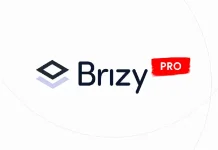Dynamic Content for Elementor Nulled is an advanced plugin that enhances Elementor’s capabilities with powerful features for creating dynamic, interactive websites. With seamless integration with tools like ACF and WooCommerce, it allows you to design personalized content and add functionality without writing a single line of code.
Dynamic Content for Elementor Free Download
Dynamic-content-for-elementor.zip
Changelog
v3.3.11 – 2025/08/14
* Fix: Animated Text widget now preserves HTML semantic tags (h1, h2, etc.) during text animation instead of stripping them
* Fix: ACF Repeater, when DataTables was used, some UI controls were always displayed
* Fix: Advanced Video Controls extension not working correctly on hosted videos in ACF Repeater templates
* Fix: Signature for Elementor Pro Form was not displayed correctly if hidden by Conditional Fields on page load and then later shown
* Tweak: Conditional Fields For Elementor Pro Form, added Dynamic Tags support for Conditions Expressions field (enabled via dynamicooo/conditional-fields/dynamic-tags filter)
* Minor fixes





![(v4.0.0) Logo Carousel Pro Nulled [ShapedPlugin]](https://nullgrand.com/wp-content/uploads/2024/12/Logo-Carousel-Pro-v4.0.0-ShapedPlugin-218x150.webp)
![Instagram Feed Pro (v6.8.1) Nulled [Developer] By Smash Balloon](https://nullgrand.com/wp-content/uploads/2024/12/Instagram-Feed-Pro-v6.4.1-Developer-By-Smash-Balloon-218x150.webp)





